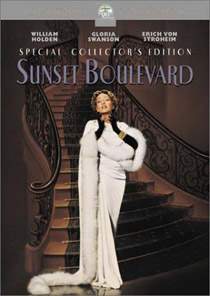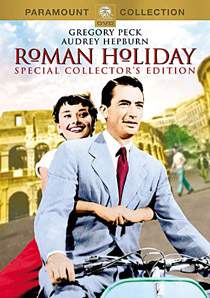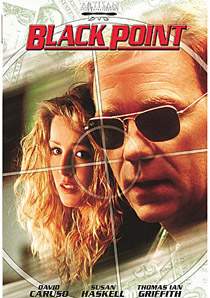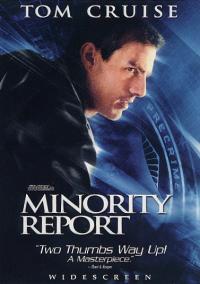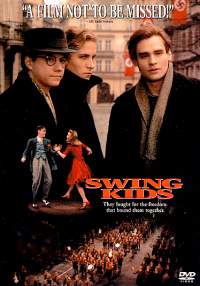|
||||||||||||||||||||||||||||||||||||||||||||||||||||||||||||||||||||||||||||||||||||||||||||||||||||||||||||||||||||||||||||||||||||||||||||||||||||||||||||||||||||||||||||||||||||||||||||||||||||||||||||||||||||||||||||||||||||||||||||||||||||||||||||||||||||||||||||||||||||||
|
Synopsis Plot Overview John Robie (Grant) was once known as "The Cat", an infamous jewel thief, but is now reformed to a law abiding life. When a series of gem thefts break out on the French Riviera, all eyes turn to Robie. In order to keep himself in the clear, John hooks up with Frances (Kelly), and using her mother's jewels, baits a trap for the real perpetrator. All the while, Frances is convinced John is the thief, and out of love for him, is doing it all to help him escape the authorities. Commentary Some time ago, a fellow film connoisseur put to me a question which is sheer murder for a movie lover: Name the top five Hitchcock pictures. Agony! Then he made it easy on me and said, "In no particular order". To Catch a Thief is definitely in the top five! Following on the success of "Rear Window", Hitch naturally wanted as good a picture if not better. Although less tense than many of his favored pieces, Hitch successfully waves the tale and develops the characters such that by the time things do get tense towards the end, you are right on the edge of your seat. "To Catch a Thief" was made in a different age. Looking at it today, one can't help but notice a conspicuous lack of bikinis on the French beach. More noteworthy is the incredible success of Hitchcock in weaving in what would otherwise be censorable innuendo, without being overt. As with all of Hitchcock's movie, "To Catch a Thief" is a wonder in areas of cinematography and imagery. Hitch remains one of the greatest "visual" movie makers. Extras There are three new Featurettes for this DVD. Writing and Casting To Catch a Thief is a collection of insights from Steven DeRosa (author: "Writing with Hitchcock"), Hitchcock's granddaughter Mary Stone, and his daughter. The feature goes over the finer points of "To Catch a Thief" in terms of story and script. The Making Of To Catch a Thief is a collection of interview sound bites, predominantly of Hitchcock's granddaughter Mary Stone and Steven DeRosa again, which give some good insights into the film's making, covering location scouting, location vs. studio shooting, on-set personalities and so on. Also covered very briefly is an explanation of the Paramount VistaVision film format. Alfred Hitchcock and To Catch a Thief: An Appreciation is a retrospective mostly on the subject of Hitchcock as a family man outside of making movies, as told again by interview sound bites with his granddaughter Mary Stone and select others. Edith Head - The Paramount Years is a feature about one of the most influential costume designers of the period who of course designed the costumes for "To Catch a Thief". Also included are the theatrical trailer for the movie and a photo gallery. Technical The Dolby Digital Mono track is almost certainly a genuine representation of what audiences heard almost half a century ago. Its fidelity sounds dated, and dialogue lacks a life like quality but is never wanting for intelligibility. Interestingly, certain ambient sounds do seem to reach beyond the lone speaker, but the music tends to feel quite flat. Note that this track does seem to have been cleaned up, and therefore does not require the Academy Filter.
But you can't fault a video transfer just because it has a striped shirt in it. The transfer is reasonably good in terms of color saturation and consistency, capturing the somewhat over-vivid color of 1950s films. Shadow detail is also adequate, but alas, there is such a liberal application of edge enhancement, that it distracts and robs real detail from the picture. There is also a combination of video noise and film age that make for a muddy appearance, especially in large flat colored areas like the sky. As for the MPEG PIC flags, hooray, there is not a single drop to video, but there are a few film 3-3 and 2-2 anomalies.
To have a better understanding of what the flags above mean, please refer to our "A Beautiful Mind" review - Brian Florian -
Synopsis Plot Overview Joe (Holden) is an out of work Hollywood script writer who, while evading bill collectors, chances upon the home of Norma Desmond (Swanson), an aging relic from the silent era. The eccentric has-been is working on a script for her return but asks Joe to re-write it professionally. She insists he work at her run down mansion with her, along with her single man servant Max (Von Stroheim). Gradually the arrangement turns from just writing to being a bought companion. No one, including her director C.B. DeMille (played by the man himself), seems to have the heart to tell the old girl she's been forgotten by the masses. Joe tires of his arrangement and starts sneaking out to write a new piece with the young up and coming Betty (Olsen). When Norma finds out, the already out of control woman really loses it. Commentary This is an exquisite movie. It's a dark story told solely for the sake of telling it, and that story is about how hard Hollywood really is. How its entire mechanism is founded on the exploitation of people. Today blockbuster films pat themselves on the back about how authentic each set piece is etc. Sunset Boulevard's authenticity comes from its story and the people who play it out. Gloria Swanson may not have been a recluse eccentric, but was a big silent era star and at the time this movie was made had been forgotten (Boulevard was in fact her comeback). Erich Von Stroheim actually directed her last silent film, putting them both out of circulation. With this level of type casting, calling Wilder "daring" is an understatement. One can only imagine the flak he got from some of his peers. Recommended viewing on any level. Extras The commentary track is by Ed Sikov, author of "On Sunset Boulevard: The Life and Times of Billy Wilder". While it's a pity we can't have someone a little closer to the picture, Ed knows his stuff inside out. The Making of Sunset Boulevard is the usual collection of interview sound bites, the bulk of which are by Nancy Olsen. It's a little repetitious in terms of saying how great the movie was dozens of different ways but also provides enough interesting inside bits on the picture, that it's worth watching. The Hollywood Location Map is an interactive screen which serves as a gateway to short trivia segments on the various locations featured in the movie, including real world Hollywood hangout, Schwab's Pharmacy. There is a photo gallery as well as the script for the original Morgue Prologue which was removed we are told because audiences found it much more funny than intended. Edith Head - The Paramount Years is a feature about one of the most influential costume designers of the period, the same feature which is included with "To Catch a Thief". The Theatrical Trailer and a feature on The Music of Sunset Boulevard round out this excellent complement of extras. Technical The Dolby Digital Mono track is excellent within the context of the age of this film. While obviously band limited according to the fidelity of the day, it is very clear, still manages a lifelike quality, and even comes across as dynamic, despite the complete absence of the low end. There is a bit of a background hiss to it, suggesting the Academy Mono filter may be called for, though we found it added too much high frequency attenuation. THX's Re-Eq seemed to be just right in this case. Again, within the context of the circumstances, the video is in remarkably good shape. While overall it feels extremely soft, there are scarcely any scratches or other such age indicating defects. Any inconsistency in dynamic range is no doubt simply the nature of 1950s filming. There is little in the way of video noise, and edge enhancement, while still present, is minimal and does not tend to distract, especially given the aforementioned softness of the picture. There is a noteworthy lack of smoothness in the shading though, given away only in large areas of one shade. As for the MPEG PIC flags, there were only eight drops to video, but of these, four were rather long (144-1057 PICs).
To have a better understanding of what the flags above mean, please refer to our "A Beautiful Mind" review - Brian Florian -
Synopsis Plot Overview "Roman Holiday" is the fairytale like story of a princess tired with her life of office. While visiting the capital of Rome she escapes in the night and meets an American journalist. She does not let on she's the princess, and he does not let one that he knows who she is. He decides to give her the day of adventure she craves and turn it into a story he can sell. Through the course of the day they get to know each other as more than just acquaintances. Commentary Regarded as the film that put Hepburn on the map, "Roman Holiday" is a true original. Various permutations of this plot have been done over the years, but none capture the innocence of it quite as well as this 50's masterpiece. Charming from beginning to end, "Roman Holiday" is a staple of one of Hollywood's best decades of film making. Extras Remembering Roman Holiday is a fairly typical round of interviews with an obvious slant on the sentiment of it being a good movie. We know that, and as such, I wished for a little more behind the scenes details other than how brilliant Wyler was at picking out a cast. Restoring Roman Holiday is a very brief look at the process of reviving an old film, with emphasis on digitally removing dirt, grain, and scratches. The featurette Edith Head - The Paramount Years covers one of the most influential costume designers of the time (the same feature can be found on "To Catch a Thief" and "Sunset Boulevard"). There is also a photo gallery to browse, along with a complete set of trailers. Technical The Dolby Digital Mono track is likely very close to what audiences heard half a century ago. We are told in the short restoration featurette that the optical mono track was in reasonable shape. What we have is a track which, though characteristically dated in fidelity, is clear and clean nonetheless, with articulate dialogue. There is a welcome freedom from hiss, and at no time is the track shrill or piercing. The restoration process is indeed a success here, as this film looks excellent. There is no dirt or graininess to the image at all, while the characteristics of the day's technology are intact. Unfortunately, not the same positive comments can be made on the MPEG2 encoding side of things. While exhibiting nice detail and deep blacks, there is a touch too much edge enhancement for comfort, which can distract in some scenes. Beyond that, video noise is at a nice minimum. Unfortunately, our computer system was not able to extract the MPEG PIC flags for us to examine. - Brian Florian -
Synopsis Plot Overview Commentary I confess to not having read the book and therefore am unaffected by how well the movie followed its inspiration. It is however a classic film that holds your attention for the entire three and a half hours. One of the early movies shot in VistaVision, the visuals are absolutely splendid. As Paramount's answer to CinemaScope, VistaVision used 35mm film, run sideways, giving a very large frame on the negative which when reduced to standard 35mm release format gave excellent quality. Hence the marketing line "High Fidelity Motion Pictures". Extras The vintage black and white 3 minute 35 second trailer actually calls to mind the many pre-release HBO specials that are made today, giving just a quick behind the scenes glimpse at the making of the picture. Also included is the more standard re-release trailer. Technical Although multi-channel sound was around at the time for big budget pictures, "War and Peace" did not get such treatment, so what we get today in the Dolby Digital Mono track is likely very close to what audiences heard almost a half century ago. It does however seem to have been processed and cleaned up to some extend and does not require the Academy Filter for correct playback. While dialogue is actually quite good sounding, the moving score feels band limited in spectral content and closed in to the lone speaker. This is one film that would have deserved at least the music being distributed to the left and right speakers, but not knowing what archival materials were available to Paramount, I cannot fault it. The 16:9 enhanced transfer is generally quite good as far as movies of this vintage go. On the whole it feels a tad too dark though, even after we verified the calibration of our system. I'd like to say blacks are nice and deep, but they could very well be clipped off at the bottom. On the positive there is not quite as much video noise as we are used to, and colors are consistent, faithful to the dated look of the source. Unfortunately, there is edge enhancement to the point of distraction, even for those with smaller screens. Unfortunately, our computer system was not able to extract the MPEG PIC flags for us to examine. - Brian Florian -
Synopsis Plot Overview Ex-Military hotshot John Hawkins (Caruso) has just watched his life spin out of control since his daughter disappeared a year ago. When a couple moves in next door, John falls for the wife after he stops her from killing herself. When he finds out her husband is involved in big time money laundering, he tries to help her but ends up in the middle of a double cross and revenge. Commentary This movie is quite formulaic in its presentation. As is always the case with these plots, the wife is made to look like she is on the "good" side, then she seems to be double crossing everyone, then she's good again and so on.. By the end, you just don't care who she's out for as long as the movie ends. Extras There is nothing for extras besides the requisite trailer. Technical While fidelity of the Dolby Stereo soundtrack is generally good, the whole thing lacks a lifelike quality and comes across as a little stale. Surrounds are used occasionally, but on the whole feel neglected. The 4:3 aspect ratio is in fact he OAR for this made-for-TV movie. The transfer is reasonably sharp with bright images and strong consistent color. Shadow detail scores just adequate, while an abundance of edge enhancement distracts. On the whole, the look, like the soundtrack, lacks a lifelike quality, and like the plot, comes across as rather stale. The movie is flagged entirely as video. To have a better understanding of what the flags above mean, please refer to our "A Beautiful Mind" review. - Brian Florian -
Synopsis Plot Overview It is the year 2054, and in Washington, D.C., there is an experimental program called Pre-Crime, that uses psychics ("Pre-Cogs") to provide information about murders that are about to happen. Chief John Anderton (Cruise) views the Pre-Cogs' mental images on a powerful computer graphics station, confirms them with a judge and district attorney who serve as witnesses, then takes his force to the perpetrator for the arrest. Unfortunately, the crew sees a pre-crime visualization that John is involved with, and he is now on the run. Commentary The visuals are extremely powerful, but the movie suffers from a disease that is rampant in Hollywood right now: TOO MUCH CGI AND NOT ENOUGH SOUL. There really is no way to develop the characters when there are so many visual effects going on all the time. Spielberg is superb in the way he uses the graphics and camera movements, but still, I felt no connection with any of the characters because the story focuses on the special effects rather than people. It is just one of those things that Hollywood will have to cycle through and then get back to movies about people rather than about technology. We watch films by Frank Capra and William Wyler over, and over, and over, because they focus on the characters. "Minority Report" did not fare as well as expected at the Box Office, and it will not be one of those classics, because it is just an exercise for Industrial Light and Magic to use their latest software. So, see it now for the incredible graphics, because three years from now, the CGI will be obsolete, and that is all this movie really has. Extras The Bonus Features disc has material on the making of the movie, including locations, stunts, digital graphics programming, costuming, and a discussion with Spielberg and Cruise. - John E. Johnson, Jr. -
Synopsis Plot Overview In 1939, Nazi Germany is poised to begin WWII. But not everyone is dazzled by the brown shirt uniforms. A group of young people wear their hair long and dance to US jazz greats like Benny Goodman. This enrages Nazi loyalists who try to break up the jazz clubs that support music played by Jews and blacks in America. Three young men (Leonard, Bale, Whaley) hope to enjoy the music and at the same time resist joining their Nazi friends as part of the Hitler Jugend (Hitler Youth). It does not quite work out, and little by little, Nazi indoctrination works its horror on young minds. Commentary If you have read my review of "Minority Report" above, you know my feelings about CGI replacing story elements and character development. "Swing Kids" was made a decade ago, before CGI was such a huge part of movie-making. It shows. This is a much better movie than Minority Report because you can feel a connection with the characters. The acting is superb too, and the story is based on real youth who danced the night away instead of beating up minority citizens. Nazi Germany provides an excellent backdrop as well, because you don't have to spend much time explaining what is going on in town or the rest of the world for that matter. The film highlights swing dancing, and it sure looks like it was a lot of fun in those days. I can imagine the amount of practice the actors went through to get all those moves down pat. I wish the camera had spent more time on the musicians, because those were the times when musicians really had talent. There were no synthesizers to hide mediocre compositions, singing, and instrument playing. This is probably the real reason music sales have declined, rather than music sharing on the Internet. Computers have replaced hourly lessons and practice on the real instruments. If musicians and music companies want to improve their sales, they need to stop trying to sell us garbage for $16.99 a pop. Extras There are no extras. - John E. Johnson, Jr. -
Synopsis Plot Overview Retired FBI officer Terry McCaleb (Eastwood) decides to help the sister of a murdered woman find the murderer, since he received her heart in a transplant operation. The police don't appreciate his interference in the case and offer little help, but a fellow (Daniels) living on a boat near his own boat in the marina tags along on Terry's investigation to take notes. Meanwhile, his doctor (Huston) keeps trying to get him to stop investigating the murder, because it is causing him a fever and possible heart disturbances. Commentary Clint Eastwood has been producing and directing his own films for a long time now, but this one is evidence it is about time for him to hang up his spurs. It almost seems like a student film project and just plods along. The story is good, but it could have used a bit more zip. As one could imagine, it did not fare well at the box office, but it does not look like it cost much to produce either. Sort of like just a project to keep Clint from getting bored. Extras Extras include a discussion of the film (in Spanish) with Eastwood and the other stars. - John E. Johnson, Jr. -
|
||||||||||||||||||||||||||||||||||||||||||||||||||||||||||||||||||||||||||||||||||||||||||||||||||||||||||||||||||||||||||||||||||||||||||||||||||||||||||||||||||||||||||||||||||||||||||||||||||||||||||||||||||||||||||||||||||||||||||||||||||||||||||||||||||||||||||||||||||||||

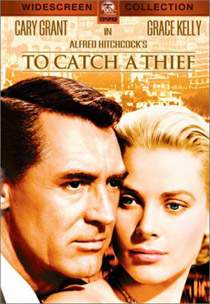
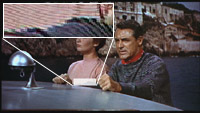 This
picture is a torture test for the DVD medium. During much of the first
half of the movie, Cary Grant wears a finely striped pullover shirt which
is virtually unwatchable on a 4:3 interlaced TV. The Twitter and
Moiré introduced by the player down converting the 16x9 image inside a 4:3
letterbox (throwing away 33% of the vertical resolution) is incredibly distracting. Switching to the 16:9 progressive
setup, things look much, much better but even so, the shirt is such that
moiré is still noted. In the scene on the boat where John and Daniel
are both wearing finely striped shirts, look what happens when the two
patterns meet.
This
picture is a torture test for the DVD medium. During much of the first
half of the movie, Cary Grant wears a finely striped pullover shirt which
is virtually unwatchable on a 4:3 interlaced TV. The Twitter and
Moiré introduced by the player down converting the 16x9 image inside a 4:3
letterbox (throwing away 33% of the vertical resolution) is incredibly distracting. Switching to the 16:9 progressive
setup, things look much, much better but even so, the shirt is such that
moiré is still noted. In the scene on the boat where John and Daniel
are both wearing finely striped shirts, look what happens when the two
patterns meet.